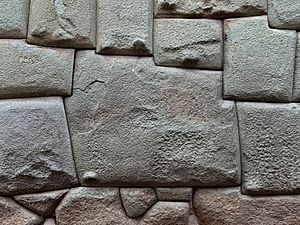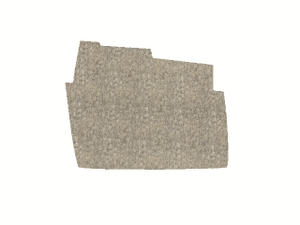Twelve-angled stone facts for kids
 |
|
| Location | Cuzco Region, |
|---|---|
| Coordinates | 13°30′58″S 71°58′35″W / 13.51611°S 71.97639°W |
| Part of | Archbishop's palace |
| History | |
| Cultures | Inca civilization |
The Twelve-angled stone is a very special rock found in Cuzco, Peru. It's like a puzzle piece from an old Inca palace wall. People think it's so important that it's called a national treasure. Today, you can still see this amazing stone in a wall that belongs to the Archbishop of Cuzco's palace.
What Makes the Stone Special?
The Twelve-angled stone is made from a type of rock called diorite. It's famous because it has a super smooth finish and exactly twelve sides, or angles, that fit together perfectly. This shows how incredibly skilled the Inca builders were. They could cut and shape stones with amazing precision!
This stone is officially recognized as a "Cultural Heritage of the Nation" in Peru. You can find it in the city of Cuzco, which is about 1,105 kilometers (687 miles) from Lima. The stone is a great example of how advanced the Inca people were in building things. While there are other stones with many angles, the Twelve-angled stone is the most well-known.
Because of its amazing craftsmanship, the stone is a popular spot for tourists in Cuzco. It's also a source of great pride for the local people. This perfectly cut stone is part of a wall known as Hatun Rumiyoc, which forms the outside of the Archbishop's palace.
See also
 In Spanish: Piedra de los doce ángulos para niños
In Spanish: Piedra de los doce ángulos para niños


